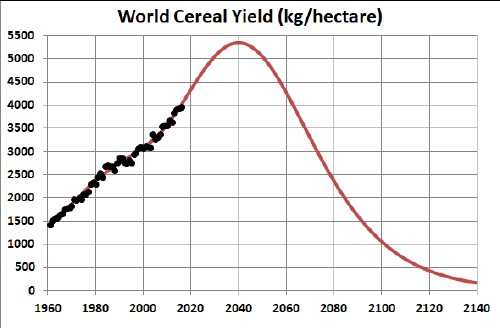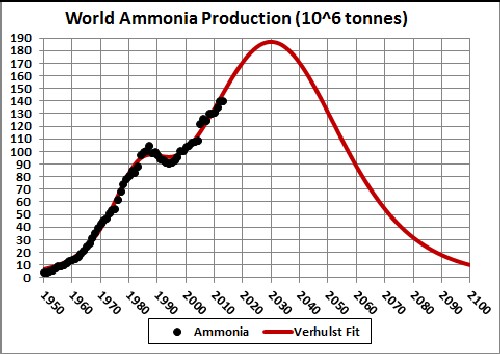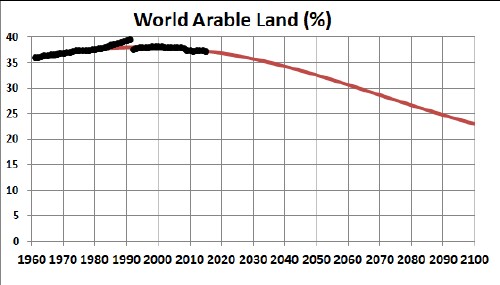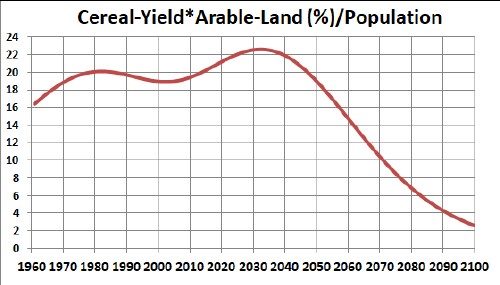
The peak is set at 2040 because of the limit of natural-gas extraction.
L. David Roper
http://www.roperld.com/personal/roperldavid.htm
1 July, 2018
There are limits to how world agriculture can produce food. The "Green Revolution" circa 1950 enabled world population to grow to over 7 billion in 2013. Since then the growth in cereal yield has been due to application of natural (phosphate rock) and and artificial fertilizers (ammonium manufactured using natural gas and air and potassium made from potash) Since natural gas, phosphate rock and potash are non-renewable resourse, they deplete with some maximum extraction rate in the year range of 2030-2060. Therefore, cereal yield will peak in the future.Tthe following curve shows a fit to the world cereal yield data with two Verhulst functions. The peak at ~2060 is assumed to be symmetrical.

The peak is set at 2040 because of the limit of natural-gas extraction.
Also, ammonia production follows world natural-gas extraction:

World arable land has leveled off and slightly fallen over recent decades. It is expected that it will continue to fall as land is taken for urban development and, eventually, as fertilizer becomes less available. Assuming that it levels off to 15% by year 2100.:


This assumes that world population levels of at 10 billion.
The impending decline in extraction of natural gas extraction for the world will cause cereal yields to reach a peak at about year 2040 and then fall rapidly. If world population continues to rise to an eventual 10 billion, there will be progressivly less cereal food for each person. Also, arable land will probably fall to some lower lever, further decreasing the cereal per capita.
Perhaps genetically modified plants will alleviate the problem somewhat.
The world fish catch may also decline.
L. David Roper interdisciplinary studies
L. David Roper, http://www.roperld.com/personal/roperldavid.htm
1 July, 2018